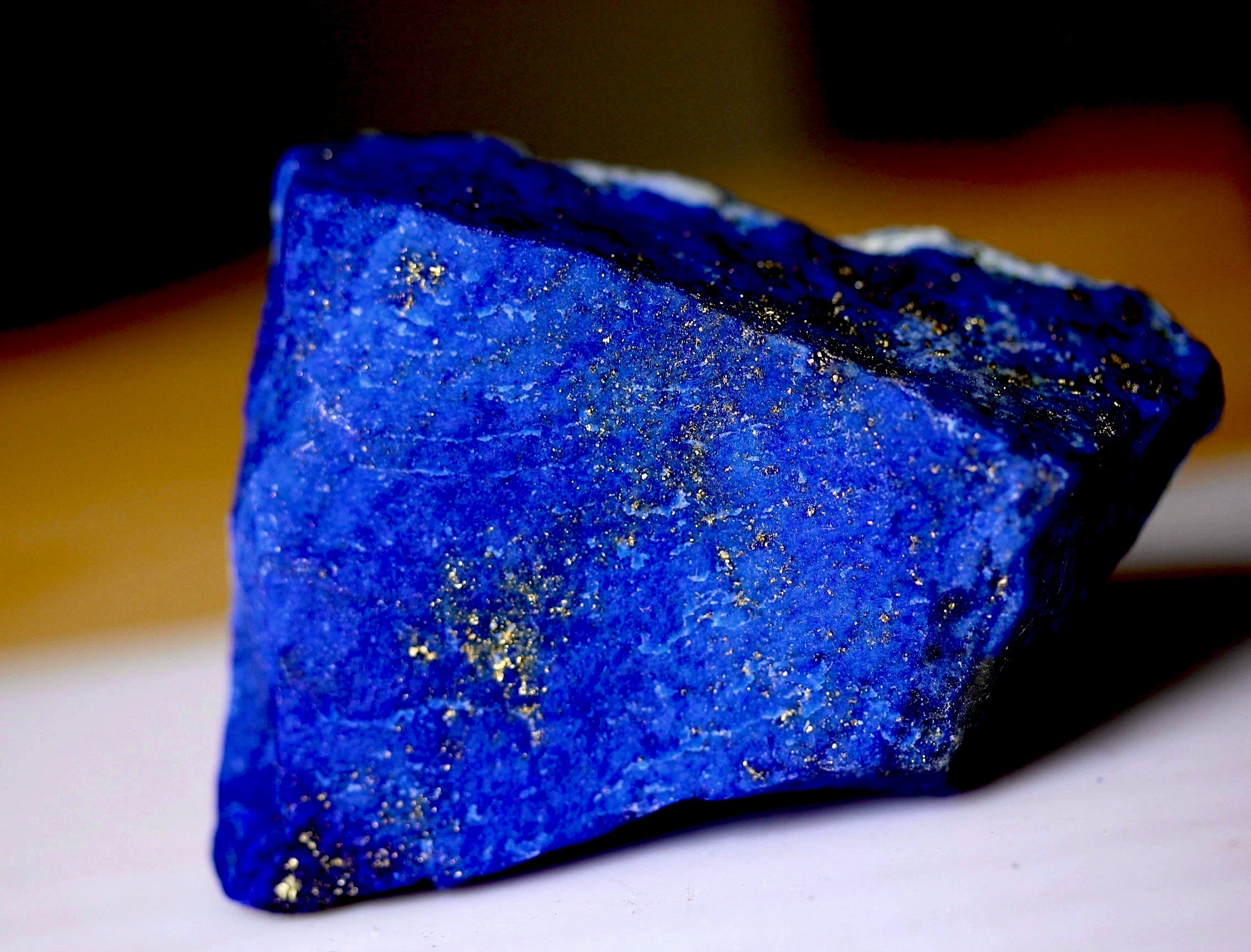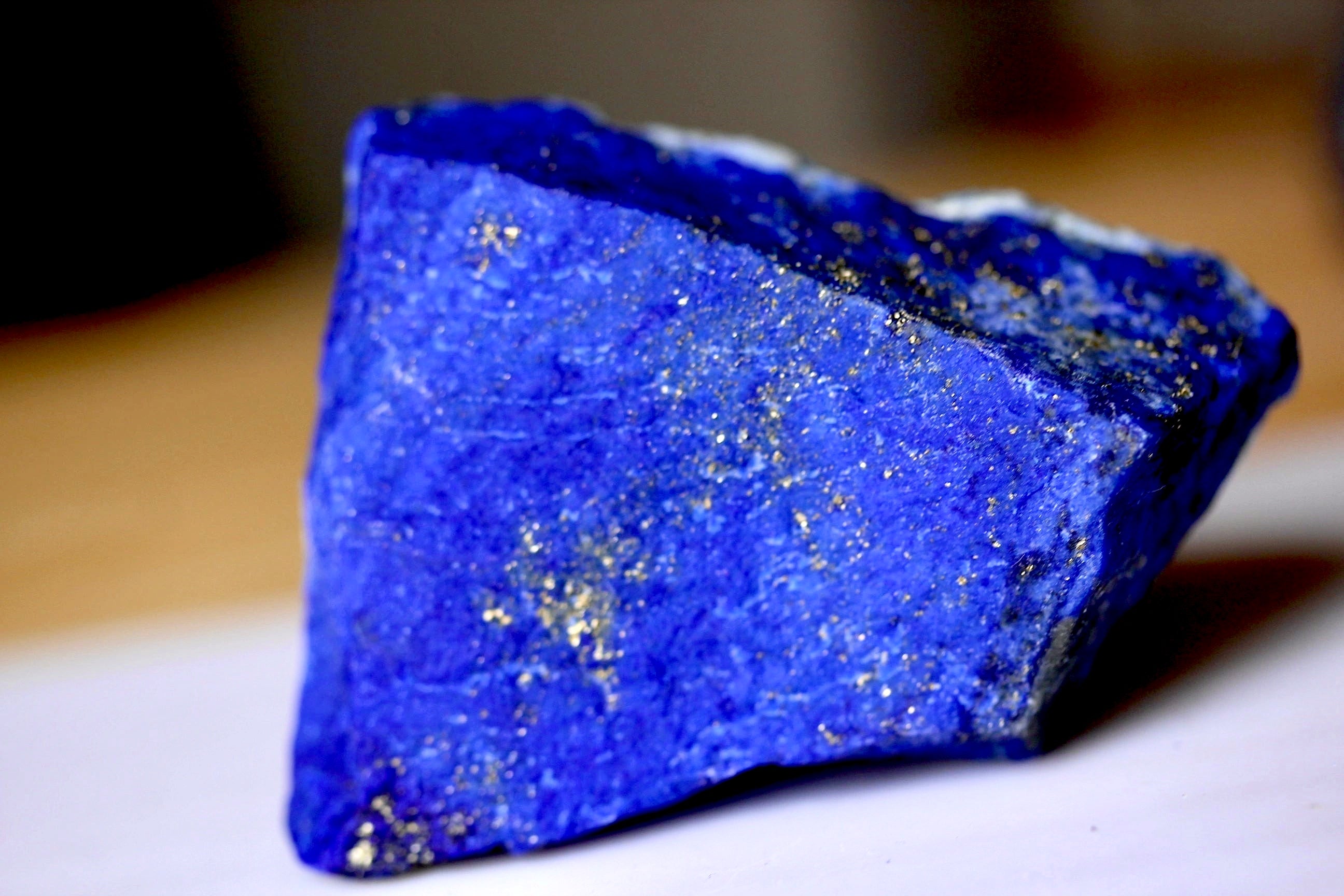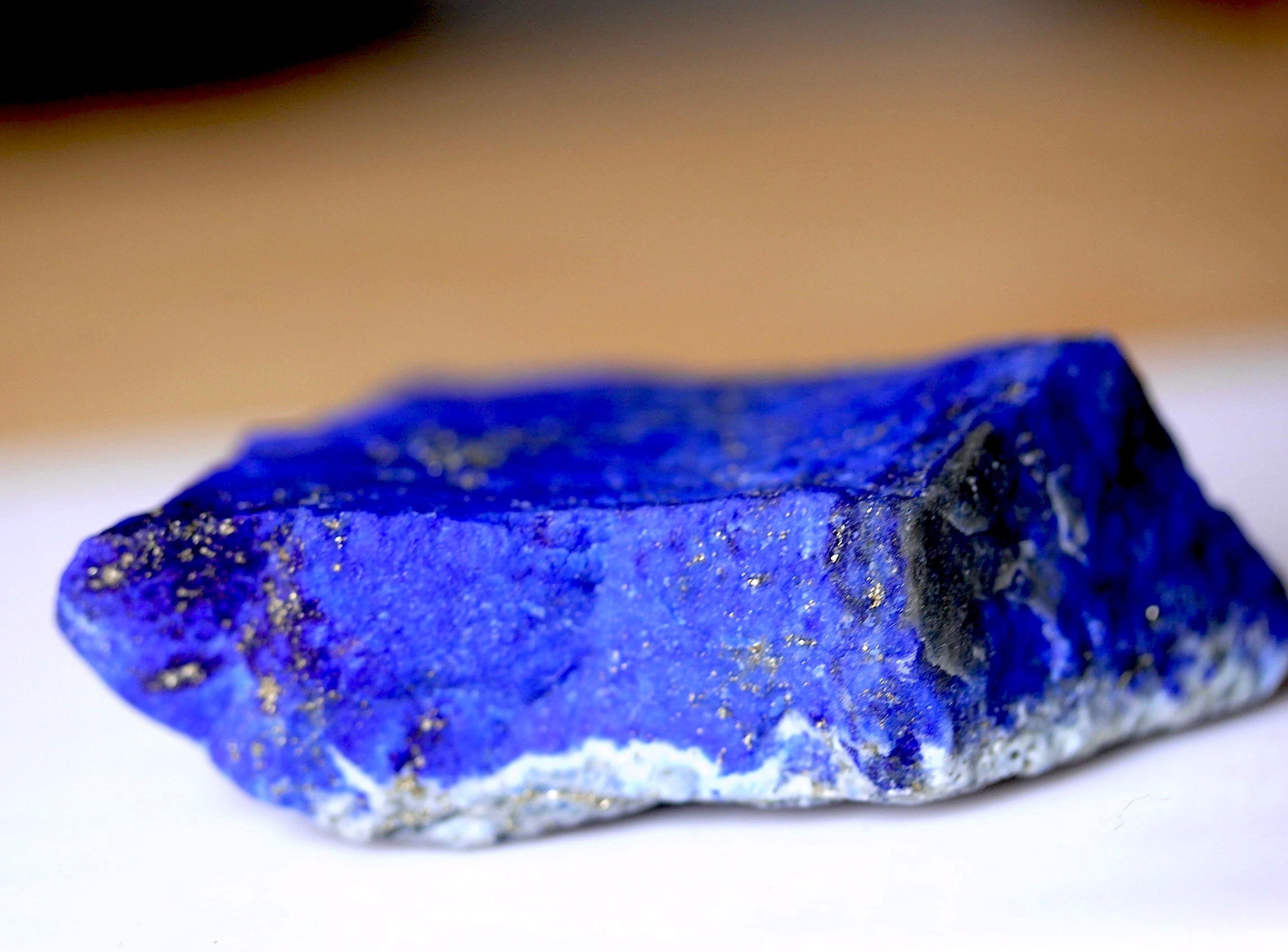
Pay With
Your transaction is protected with advanced security measures to keep your information confidential
Gemstone Specification
| Specification | Details |
|---|---|
Stone Name | Lapis Lazulli and Sodalite |
Gems Type | Natural Gemstones and Semi-Precious Gemstones |
Total Weight | 95 Grams |
Average Weight Size | 95 Grams | 1 Piece |
Carat Weight | Over 20 carats |
Dimension (w × h × t) | Length: 2.5 inches × 25.4 = 63.5 mm | Width: 1.2 inches × 25.4 = 30.48 mm | Thickness: 1.3 inches × 25.4 = 33.02 mm |
Shapes / Cut | Rough Loose Shapes |
Color of Gems | Navy Blue, Blue, and Golden |
Clarity | Opaque |
Origin | Afghanistan |
Treatments | No |
Birthstones | September |
Category Types | Fine Mineral Specimens and Lapidary Rough Stones |
Authenticity | Genuine |
Condition | Excellent (EX) |
Rarity | Uncommon |
Deal Type | Single |
| Specification | Details |
|---|---|
Stone Name | Lapis Lazulli and Sodalite |
Gems Type | Natural Gemstones and Semi-Precious Gemstones |
Total Weight | 95 Grams |
Average Weight Size | 95 Grams | 1 Piece |
Carat Weight | Over 20 carats |
Dimension (w × h × t) | Length: 2.5 inches × 25.4 = 63.5 mm | Width: 1.2 inches × 25.4 = 30.48 mm | Thickness: 1.3 inches × 25.4 = 33.02 mm |
Shapes / Cut | Rough Loose Shapes |
Color of Gems | Navy Blue, Blue, and Golden |
Clarity | Opaque |
| Specification | Details |
|---|---|
Origin | Afghanistan |
Treatments | No |
Birthstones | September |
Category Types | Fine Mineral Specimens and Lapidary Rough Stones |
Authenticity | Genuine |
Condition | Excellent (EX) |
Rarity | Uncommon |
Deal Type | Single |
Product Description
This stunning natural lapis lazuli specimen is a genuine rock sourced from Afghanistan, showing beautiful navy blue, blue having golden colors pyrite flakes throughout the stone. This is an authentic, untreated rough lapis stone perfect for collectors, lapidary work, or mineral enthusiasts.
Stone Characteristics:
- This piece weighs 95 grams.
- The stone measures approximately 63.5 mm in length, 30.48 mm in width, and 33.02 mm in thickness (2.5 x 1.2 x 1.3 inches)
- It features a rough loose shape with opaque clarity, displaying the natural beauty of unpolished Lapis Lazuli.
- The color palette includes rich navy blue, vibrant dark blue, and striking golden pyrite inclusions that create a beautiful contrast appearance
- This is a single piece specimen in excellent condition, classified as uncommon in rarity
Origin and Authenticity:
- This stone originates from Afghanistan. The country is renowned worldwide for producing the finest quality Lapis Lazuli
- It is completely natural with no treatments or enhancements applied
- This is a genuine fine piece for lapidary rough stone, perfect for making cabochons , carving, cutting, polishing, or display
- Lapis Lazuli is the traditional birthstone for September
Ideal For:
- Lapidary artists looking for quality rough material to cut and polish into cabochons or other finished pieces
- Mineral collectors seeking authentic Afghan Lapis Lazuli specimens for their collection
- Jewelry makers who want to create custom pieces from natural rough stones
- Crystal enthusiasts and metaphysical practitioners who appreciate the natural energy of unpolished stones
Frequently Asked Questions About Rough Lapis Lazuli Rocks
What is rough Lapis Lazuli and how is it different from polished stones?
Rough Lapis Lazuli is the natural, unpolished form of the gemstone as it comes from the earth. Unlike polished stones that have been cut and smoothed, rough stones retain their natural texture and shape, showing the authentic character of the mineral. Many collectors and lapidary artists prefer rough stones because they can see the true quality of the material and have the option to cut or polish it themselves.
Can I use this rough Lapis Lazuli for jewelry making?
Yes, this rough Lapis Lazuli is perfect for jewelry making if you have lapidary skills or access to cutting and polishing equipment. You can cut it into cabochons, beads, or other shapes for use in rings, pendants, earrings, and other jewelry pieces. If you don't have lapidary equipment, you can also have it professionally cut and polished by a lapidary service.
Is Afghan Lapis Lazuli better quality than Lapis from other locations?
Afghan Lapis Lazuli, particularly from the Badakhshan region, is considered the finest quality in the world and has been mined for over 6,000 years. It typically features the most intense blue color with beautiful golden pyrite inclusions and minimal white calcite. This is why Afghan Lapis commands premium prices and is highly sought after by collectors and jewelers.
What are the golden flecks in Lapis Lazuli?
The golden flecks you see in Lapis Lazuli are pyrite crystals, an iron sulfide mineral. These metallic inclusions are actually desirable and add to the stone's beauty, creating a starry night sky appearance. High-quality Lapis Lazuli typically contains these golden pyrite specks distributed throughout the deep blue lazurite base.
How should I store and care for rough Lapis Lazuli?
Store your rough Lapis Lazuli in a dry place away from direct sunlight and extreme temperatures. While Lapis is relatively durable with a hardness of 5-6 on the Mohs scale, it can be scratched by harder materials, so keep it separate from other stones. Clean it gently with a soft, dry cloth. Avoid using water, chemicals, or ultrasonic cleaners as Lapis Lazuli is porous and can be damaged by moisture and harsh substances.
What is the difference between Lapis Lazuli and Sodalite?
While both are blue stones, Lapis Lazuli is actually a rock composed of multiple minerals including lazurite, calcite, and pyrite, while Sodalite is a single mineral. Lapis Lazuli typically has a deeper, more intense blue color with golden pyrite inclusions, whereas Sodalite tends to be a lighter blue with white calcite veining. This specimen contains both materials, offering a beautiful combination of colors and textures.
Is this stone suitable for beginners in lapidary work?
Yes, Lapis Lazuli is a good stone for intermediate to advanced beginners in lapidary work. It has a moderate hardness that makes it workable without being too soft or too hard. However, because it's a valuable material, you may want to practice on less expensive rough stones first if you're completely new to cutting and polishing. The opaque nature of Lapis also makes it forgiving for cabochon cutting.



